Recent reports have emerged about one of the CASD submarines running low on food supplies, with the crew having to share sweets and other items from the NAAFI.
To those unfamiliar with how ships and submarines are resupplied, it could seem as though these submariners were being deprived of food.
As highlighted by Rear Admiral Dr Chris Parry, when a ship or submarine departs for deployment, it typically carries around ninety days’ worth of supplies. Surface ships can be resupplied while underway using Royal Fleet Auxiliary (RFA) ships and other allied auxiliaries.
However, sometimes a port call is necessary. Resupplying a submarine at sea, on the other hand, is much more challenging and hazardous. Submarines struggle to maintain position alongside auxiliaries, so a vertical replenishment (VERTREP) is the next best option.
This article is the opinion of the author and not necessarily that of the UK Defence Journal. If you would like to submit your own article on this topic or any other, please see our submission guidelines.
However, this method has its challenges if the vessel is in open water. VERTREP requires the fore or aft hatches to be opened, a significant safety risk.
This is realistically only feasible in very calm, sheltered waters; otherwise, there is a risk of flooding. Given the vast and largely undisclosed patrol areas of CASD submarines, VERTREP is likely not used, as it would compromise the mission.
Did Food Run Low?
When at sea, food stocks inevitably diminish over time. Fresh produce lasts only around two to three weeks before the crew switches to canned and frozen products. This is unsurprising—anyone who does a weekly shop knows that fresh products don’t last as long as canned or frozen goods. Submarine and ship menus are somewhat static to maintain a sense of normalcy; for example, on one boat, curry night was on Wednesdays, fish and chips on Fridays, and there was a ‘fallout menu’ at the start of deployment.
As supplies dwindle, food items may be rationed, a decision made by command and logistics teams. Rationing could mean something as simple as serving only one sausage with breakfast instead of two, stretching the stores to make them last longer. Low food stocks are not uncommon on ships or submarines. However, some allied navies employ a method to alleviate this issue, which the UK has trialled.
Another Method
In 2011, on HMS Turbulent, celebrity chef Heston Blumenthal demonstrated that essential supplies could be condensed using the sous vide method. He showed Commander Ryan Ramsey the vast amount of food required for a single meal for the crew, which took up an entire mess table seating up to six. The same ingredients prepared sous vide occupied only a large box.
One of the significant issues for submarines is storage space, so Commander Ramsey immediately saw the sous vide method as a way to extend time on station. A report was then forwarded up the chain of command to the head of logistics. However, at that time, the concept wasn’t warmly received and was eventually shelved.
What is Souse Vide?
Sous vide, a French term meaning “under vacuum,” is a cooking method where food is sealed in airtight bags and then immersed in water or steam maintained at a precise, low temperature for an extended period. This technique preserves the food’s natural moisture, flavour, and nutrients, resulting in consistent, high-quality meals. Because sous vide condenses ingredients into smaller packages, it enables more efficient storage—making it particularly advantageous in confined environments like submarines. This method also extends the shelf life of food, allowing it to be stored for longer without compromising quality, which is ideal for long deployments where space and freshness are limited.
Is Sous Vide Practical?
In short, yes. Various navies now use this method to reduce the bulk of supplies, enabling extended deployments. By decreasing the volume of foodstuffs, it’s possible to increase the overall amount carried, thereby lengthening the time on station. In his demonstration, Heston Blumenthal showed that it wouldn’t be impractical to double the stored provisions on a submarine. Thus, a typical ninety-day stock could stretch to one hundred and eighty days, or even more with rationing.
The logistics team’s priority is to maintain a balanced diet and ensure there’s enough food to go around. NAAFI items, such as sweets and luxuries, aren’t their main concern; keeping the crew well-fed is.
Many navies use sous vide on their submarines, so it’s not far-fetched to assume it’s applied on ours in some capacity. To most of the crew, sous vide food would be indistinguishable, as the method preserves ingredient integrity; the only noticeable difference might be reduced portion sizes.
Overall, sous vide has proven to be a practical solution for the ongoing challenge of extended patrols, enabling a crew to remain well-fed without requiring resupply.



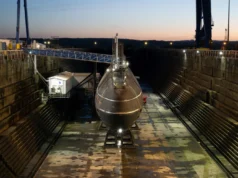

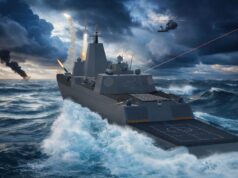
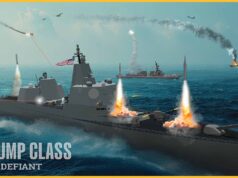



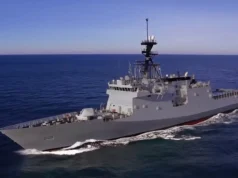
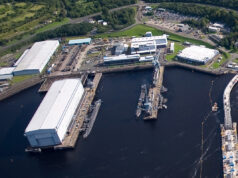

I remember watching the programma. I am surprised this got blocked. I wonder who and why. Cost and at that time no need?
NCHQ taught chefs must prepare everything at sea. Sous Viderequires frying ingridients on land before sailing. In essence, makes it cheating in their view. Not sure how expensive on SV machine is.
I actually answered the parliamentary question on this at the time. The idea was for submariners to prepare these dishes in porta cabins in the dockyard prior to embarking on the subs. It all sounds great, vacuum packing ‘cod cheeks’ etc. In reality you need a multi million pound sterile warehouse with a sours vide production company. It was basically a gimmick promoting Heston, The RN has numerous other ‘solutions’ and this was not a viable one. Newer subs with larger freezers that don’t fail is the priority.
not to mention sous vide tastes better than canned or frozen, but must be packaged properly (ie have separate bags for rice, meat and sauce for curry, otherwise a soggy mess)
Double bonus of improved scram and better packing factor.
Would Heston curate the menus? Heston @ CASD?
As you say it has to be done properly but it is fundamentally a sound idea.
I wonder why the Navy rejected sous vide when other navies use it and Blumenthals demo was surely convincing
Whilst somewhat different, the armys compo rations are very space-efficient
It was good for TV. Get Rramsey’s SSN14 to get the fuller background.
We probably want to be focusing on having submarines maintained properly so they don’t need to spend 6 months at sea.
Good point. And well put I thought…
Cheers CR
Exactly Jim. The voice of reason and common sense as usual!
The voice of reason!
Yes.
What I don’t understand is why the RN did not take up the idea when it was first highlighted as an option? Makes no sense.
They could even adopt it for the surface fleet and either increase the food supplies on board which would reduce resupply requirements (something of an advantage given the poor state of the RFA at the moment) or the saved space could be used for something else.
Cheers CR
Cooking beforehand – not what they want Navy chefs do.
Hmm, if that’s the case then, not withstanding the maintenance infrastructure issues that should never have been allowed to develop, they are compromising operational effectiveness so Navy chefs get to do cheffing afloat. Really! Good grief.
CR
I guess it needed a commercial unit and investment in machinery to get it up and running at scale?
Surely not that expensive when compared to the issues with the RFA and maintenance facilities upgrades… Putting this in place would add to operational flexibility which in my book is always a plus.
That’s fine but double the food so increase the patrol time means more garbage to store and err how do shrink a bog roll 🥴I suppose they could use the 4 redundant C5 silos and most of the torpedo tubes to start off with 🤔
Deep will probably tell me they already do !
Looks from bog roll to sous vide machine..🤔
Bides.
Less storage needed, less waste produced!
Vacuum pack the bog role.
Corn beef and tinned sprouts.? Apparently great in the desert in WW2, according to an old friend, now departed, hated but it kept you going. 😬
I remember that show Heston did. I also remember a lot of items were pre-prepared on shore with items being diced for lower storage capacity. The episode is on Dailymotion or Amazon called ‘Heston’s Mission Impossible‘. The British Airways episode was also pretty interesting.
Most Puddle Pirates I knew tended to be of ample build. A diet wouldn’t do them any harm.
Many of the Puddle Pirates I knew were a little on the plump side. A diet will do them no harm
If not, it’s way over time, that this method of storing and preparing food at sea be adopted on all Navy vessels.
I would personally draw the line at subbing the job out to contractors. The Navy’s own Chef’s can prepare the food ashore, vacuum it properly, for it to be then used at sea.
Save space – Maintain Chef Training… what could be better.
Excellent concept; wonder whether USN has experimented w/ sous vide method of food preparation? Often presented as haute cuisine on American food themed television programs. Of course, there is always the option of laying in some MREs for end of tour. 🤔😋😁😉
Never heard of this method, but seems a bit of no brainier to me. Even if just half the meals were prepared in this way it would save space. Not sure if there is extract “rubbish” following this, but also given the “assumed” relatively limited space on the subs and smaller vessels, it is amazing it wasn’t adopted. What did the Sdmiral want them to do, carryon with bullybeef, hard tac and a tot of rum.
I wasn’t aware any of our submarines had NAAFI shops !
It crushed the chips
Sous vide has been invented 50 years ago. Just saying.